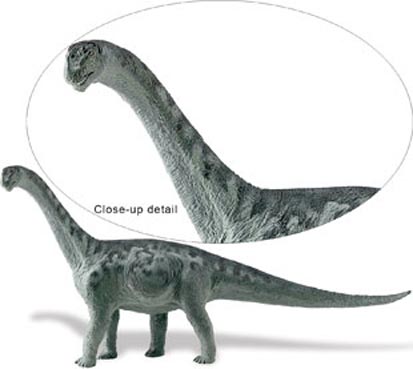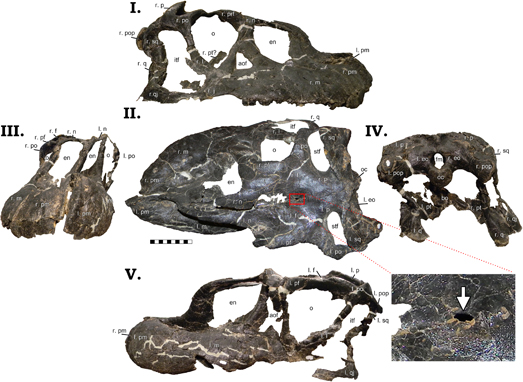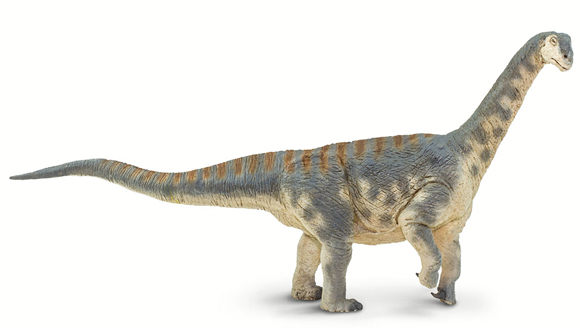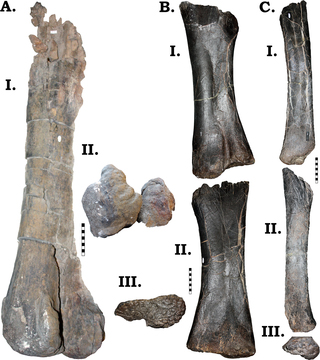Montana’s First Definitive Camarasaurus
The Northernmost Camarasaurus
Scientists have announced the discovery of a Camarasaurus specimen from the state of Montana. Dinosaurs from Montana are nothing new, however, this is the first definitive evidence that this sauropod ranged as far north as the Treasure State.
Writing in the on-line academic journal PLOS One, the researchers, Cary Woodruff, the Director of Palaeontology at the Great Plains Dinosaur Museum, (Malta, Montana) and Dr John Foster (Museum of Moab, Utah) describe the partial, articulated remains of a Camarasaurus specimen from Morrison Formation exposures located in the Little Snowy Mountains, Fergus County, Montana. The scientists conclude that further exploration of Upper Jurassic sediments may yield further dinosaur fossil material, helping palaeontologists to learn more about the ecosystem and the dinosaur fauna within it that lived in more northerly latitudes of North America.
An Illustration of the Late Jurassic Sauropod Camarasaurus
The Curious Camarasaurus
The Camarasaurus genus was erected by the famous American palaeontologist Edward Drinker Cope in 1877. Numerous fossil specimens have been collected from the Morrison Formation of the western United States, in fact Camarasaurus is represented in the Morrison Formation by more than 530 specimens, it is one of the most studied and therefore, best-known sauropods in the world. Although it shared the Late Jurassic habitat of western North America with a number of other long-necked dinosaurs, animals such as Diplodocus, Apatosaurus, Brontosaurus and Brachiosaurus, it is by far, the most abundant sauropod taxon known from the Morrison Formation. It also appears to have had one of the highest population densities amongst the large herbivorous dinosaurs during the Jurassic.
At the moment, a total of four species are recognised:
- C. lentus named in 1889
- C. grandis named in 1877
- C. supremus named in 1877
- C. lewisi named in 1988
The vast majority of Camarasaurus fossil remains (82%) are only identifiable down to the genus level. The Montana remains consisting of a nearly complete skull, articulated neck vertebra, rib fragments, part of the shoulder girdle and limb bones cannot be assigned to a species, but enough of the skeleton has been recovered to confirm the Camarasaurus diagnosis.
Views of the Skull Material of the Montana Camarasaurus (GPDM 220)
Picture credit: PLOS One
The picture above shows various views of the partial Camarasaurus skull (I) – right lateral view, dorsal view (II), viewed from the front (III), viewed from the rear (IV) and left lateral view (V).
Camarasaurus Specimen Claims to Fame
The fossils had been known about for some years, and the dinosaur had been nick-named “Ralph” in honour of the rancher’s land, on which the dinosaur was discovered. Collecting began in 2005, although it has taken some years to fully prepare the specimen. GPDM 220 may represent the most northernmost sauropod fossils yet found in the Morrison Formation. The fossils may also represent the most northerly sauropod remains found in North America.
Scrappy fossil material ascribed to sauropods in general and Camarasaurus in specific have been found in Montana before, but this is the first time, as far as we at Everything Dinosaur are aware, that the fossils have been substantial enough to permit identification down to the genus level.
A Model of a Camarasaurus
Although relatively small when compared to Camarasaurus remains from Wyoming and Utah, the bones represent an adult animal, histological analysis of a core taken from the femur and an analysis of a rib bone, indicates that this dinosaur was at least thirty years old when it died (possibly older, perhaps thirty-five). The palaeontologists speculate that Montana was not an ideal habitat for Camarasaurus, this may explain the relative small size of the specimen. A firmer conclusion cannot be made due to the paucity of Camarasaurus specimens from northerly latitudes and the potential for under-sampling of dinosaur fossil remains in unfavourable ecosystems.
Limb Bones from the Montana Camarasaurus
Picture credit: PLOS One
The picture above shows various limb elements associated with the skeleton. An incomplete left femur (A) is shown in a posterior view (I) and distal view (II). A partial right tibia is shown (B) in (I) anterior view, (II) posterior view and (III) distal view, whereas, (C) represents an incomplete left fibula in (I) anterior, (II) posterior and (III) distal view). The scale bar = ten centimetres.
Hinting at More Camarasaurus Fossil Discoveries to Come
The research team are confident that further examination of Morrison Formation exposures in Montana will yield a lot more dinosaur fossil remains. For example, the Camarasaurus fossil material was found in association with an as yet, undescribed stegosaur as well as two theropod teeth.
A spokesperson from Everything Dinosaur stated:
“The publication of this scientific paper goes to show, that the Morrison Formation, particularly those extensive exposures outside of Wyoming and Utah, can still surprise palaeontologists. Further fieldwork will undoubtedly reveal several more specimens from Montana, adding to our knowledge of the dinosaur fauna from more northern parts of the United States in the Late Jurassic.”
Visit the Everything Dinosaur website: Everything Dinosaur.





